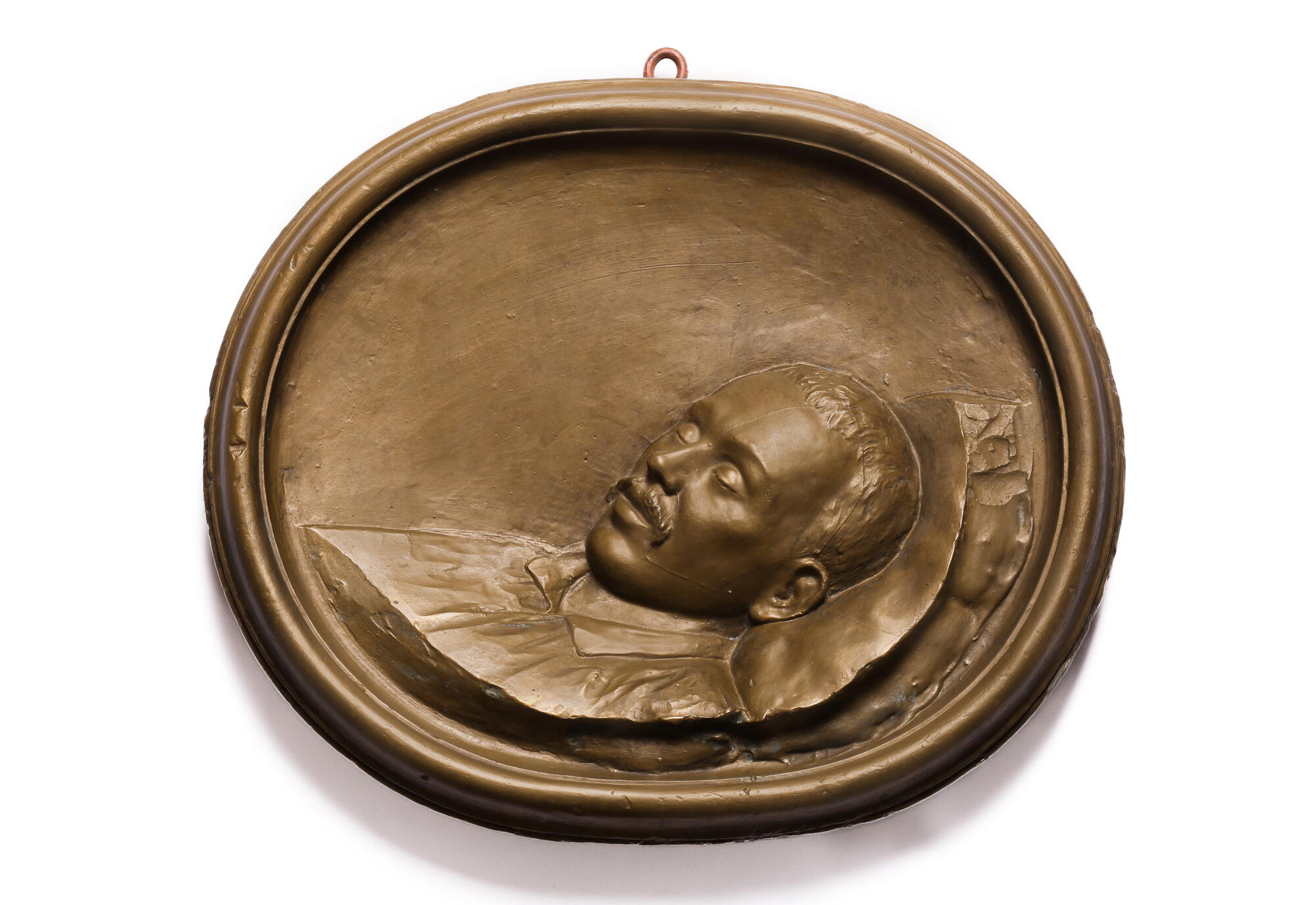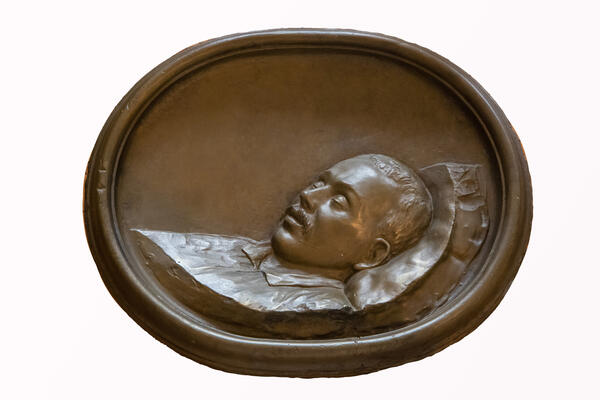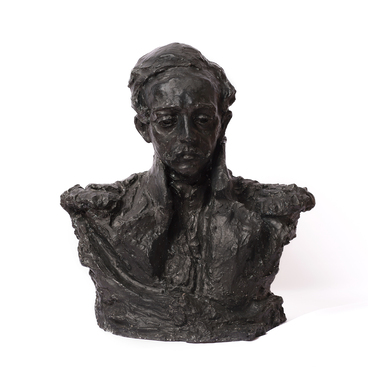Mikhail Ivanovich Zeidler made a plaster bas-relief of Mikhail Lermontov in 1884. The image resembles the portrait of Lermontov that was created by the poet Robert Schwede. The artists knew each other: there is a portrait of 1840 by Robert Schwede, which depicts the young Mikhail Zeidler.
The bas-relief shows Mikhail Lermontov lying on a pillow wearing a shirt with a turn-down collar. His hair is cut short and swept down, his eyes are closed, and his mouth is slightly ajar. In order to achieve the greatest expressiveness of form, Mikhail Zeidler smoothed out the poet’s features. In 1886, the bas-relief was transferred to the Institute of Russian Literature, but it was lost during the Great Patriotic War. The earlier version that had been discarded by the creator survived.
At first, Mikhail Zeidler studied in the Irkutsk gymnasium, then in the boarding house of pastor Leсorald in Saint Petersburg. After that, he entered the School of Cavalry Junkers and Ensign of the Guard and became Lermontov’s fellow. After that, they became comrades-in-arms in the Life-Guard Hussar regiment.
On March 3, 1838, while seeing off a friend to the Caucasus, Mikhail Lermontov wrote an impromptu called “The Blond Russian German”. In the last lines of the poem, the author used a play on words, hinting at Mikhail Zeidler’s love for Sofya Nikolayevna Staël von Holstein.
Zeidler studied sculpture technique under Ivan Petrovich Vitali, a professor at the Imperial Academy of Arts. In 1844, in Saint Petersburg, Mikhail Zeidler visited the workshops of the best artists. In 1845, he made an art medallion of Grand Duke Michael Pavlovich for Grand Duchess Elena Pavlovna.
Mikhail Zeidler continued his sculpture studies in the workshop of Professor Nikolay Pimenov. In 1859, he presented a large group of wax sculptures called “Stags Fighting” at the Academy of Arts, and a sculpture “A Greyhound with a Fox”. For these works, the sculptor was awarded the title of an Honorary Associate Member. With this award, the academy celebrated those who made a great contribution to the development and popularization of art.
The bas-relief shows Mikhail Lermontov lying on a pillow wearing a shirt with a turn-down collar. His hair is cut short and swept down, his eyes are closed, and his mouth is slightly ajar. In order to achieve the greatest expressiveness of form, Mikhail Zeidler smoothed out the poet’s features. In 1886, the bas-relief was transferred to the Institute of Russian Literature, but it was lost during the Great Patriotic War. The earlier version that had been discarded by the creator survived.
At first, Mikhail Zeidler studied in the Irkutsk gymnasium, then in the boarding house of pastor Leсorald in Saint Petersburg. After that, he entered the School of Cavalry Junkers and Ensign of the Guard and became Lermontov’s fellow. After that, they became comrades-in-arms in the Life-Guard Hussar regiment.
On March 3, 1838, while seeing off a friend to the Caucasus, Mikhail Lermontov wrote an impromptu called “The Blond Russian German”. In the last lines of the poem, the author used a play on words, hinting at Mikhail Zeidler’s love for Sofya Nikolayevna Staël von Holstein.
Zeidler studied sculpture technique under Ivan Petrovich Vitali, a professor at the Imperial Academy of Arts. In 1844, in Saint Petersburg, Mikhail Zeidler visited the workshops of the best artists. In 1845, he made an art medallion of Grand Duke Michael Pavlovich for Grand Duchess Elena Pavlovna.
Mikhail Zeidler continued his sculpture studies in the workshop of Professor Nikolay Pimenov. In 1859, he presented a large group of wax sculptures called “Stags Fighting” at the Academy of Arts, and a sculpture “A Greyhound with a Fox”. For these works, the sculptor was awarded the title of an Honorary Associate Member. With this award, the academy celebrated those who made a great contribution to the development and popularization of art.



